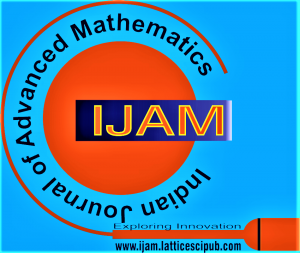![]()
An Elementary Proof for Fermat’s Last Theorem using Three Distinct Odd Primes F, E and R
P. N. Seetharaman
P.N Seetharaman, Retired Executive Engineer, Energy Conservation Cell), Tamil Nadu State Electricity Board, Anna Salai, Chennai (Tamil Nadu), India.
Manuscript received on 09 February 2025 | First Revised Manuscript received on 13 February 2025 | Second Revised Manuscript received on 20 March 2025 | Manuscript Accepted on 15 April 2025 | Manuscript published on 30 April 2025 | PP: 22-26 | Volume-5 Issue-1, April 2025 | Retrieval Number: 100.1/ijam.A119105010425 | DOI: 10.54105/ijam.A1191.05010425
Open Access | Editorial and Publishing Policies | Cite | Zenodo | OJS | Indexing and Abstracting
© The Authors. Published by Lattice Science Publication (LSP). This is an open-access article under the CC-BY-NC-ND license (http://creativecommons.org/licenses/by-nc-nd/4.0/)
Abstract: In number theory, Fermat’s Last Theorem states that no three positive integers a, b and c satisfy the equation a n + b n = c n where n is any integer > 2. Fermat and Euler had already proved that there are no integral solutions to the equations x 3 + y3 = z3 and x4 + y4 = z4 . Hence it would suffice to prove the theorem for the index n = p, where p is any prime > 3. In this proof, we have hypothesized that r, s and t are positive integers in the equation r p + sp = tp where p is any prime >3 and prove the theorem using the method of contradiction. We have used an Auxiliary equations x 3 + y3 = z3 along with the main equation rp + sp = tp , which are connected by means of transformation equation through the parameters. Solving the through transformation equations we get the result rst = 0, showing that only a trivial solution exists in the main equation.
Keywords: Transformation Equations Two Fermat’s Equations. 2010 Mathematics Subject Classification 2010: 11A–XX.
Scope of the Article: Applied Mathematics
